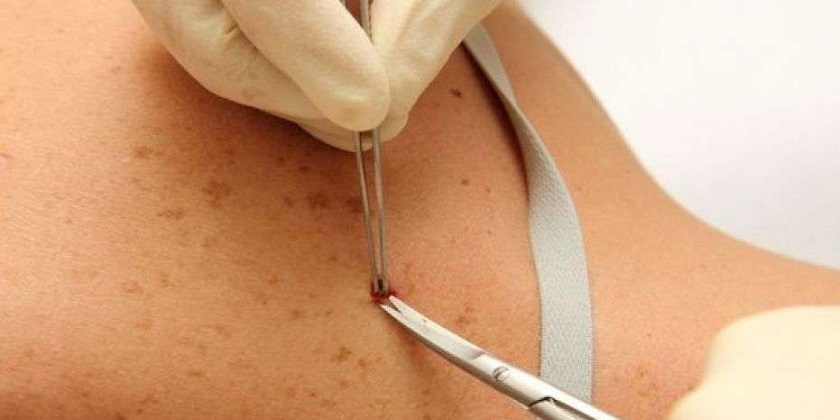- Home
- skin Biopsy

A skin biopsy removes cells or skin samples from the surface of your body. The sample taken from a skin biopsy is examined to provide information about your medical condition. A doctor uses a skin biopsy to diagnose or rule out certain skin conditions and diseases.
Three main types of skin biopsies are:
Three main types of skin biopsies are:
- Shave biopsy. A doctor uses a tool similar to a razor to remove a small section of the top layers of skin (epidermis and a portion of the dermis).
- Punch biopsy. A doctor uses a circular tool to remove a small section of skin including deeper layers (epidermis, dermis and superficial fat).
- Excisional biopsy. A doctor uses a small knife (scalpel) to remove an entire lump or an area of abnormal skin, including a portion of normal skin down to or through the fatty layer of skin.
Why it's done
A skin biopsy is used to diagnose or rule out skin conditions and diseases. It may also be used to remove skin lesions.
A skin biopsy may be necessary to diagnose or to help treat skin conditions and diseases, including:
- Actinic keratosis
- Bullous pemphigoid and other blistering skin disorders
- Dermatitis, psoriasis and other inflammatory skin conditions
- Skin cancers, including basal cell carcinoma, squamous cell carcinoma, and melanoma
- Skin infection
- Skin tags
- Suspicious moles or other growths
- Warts

